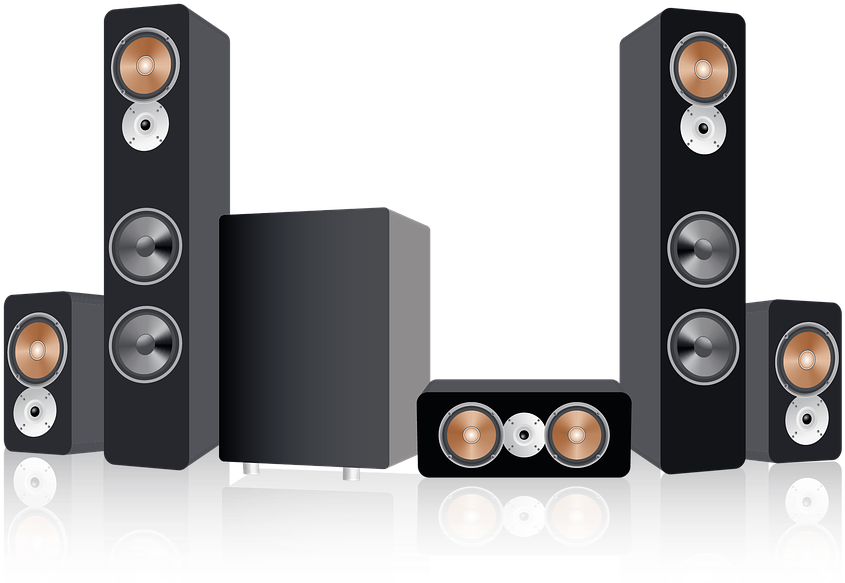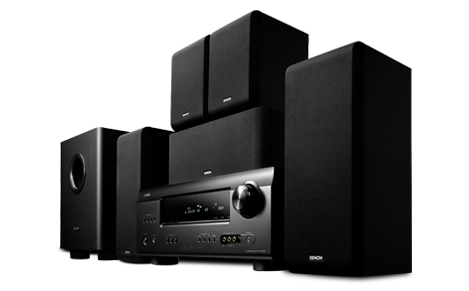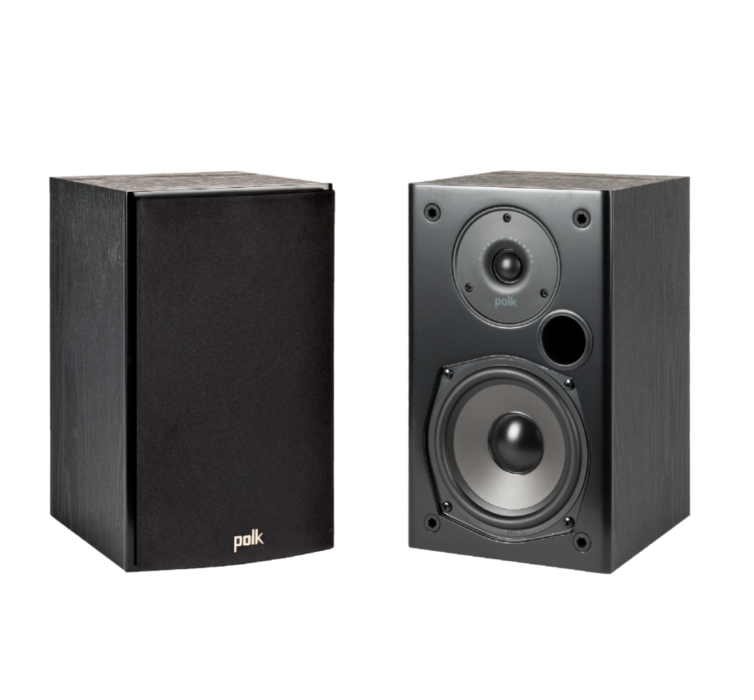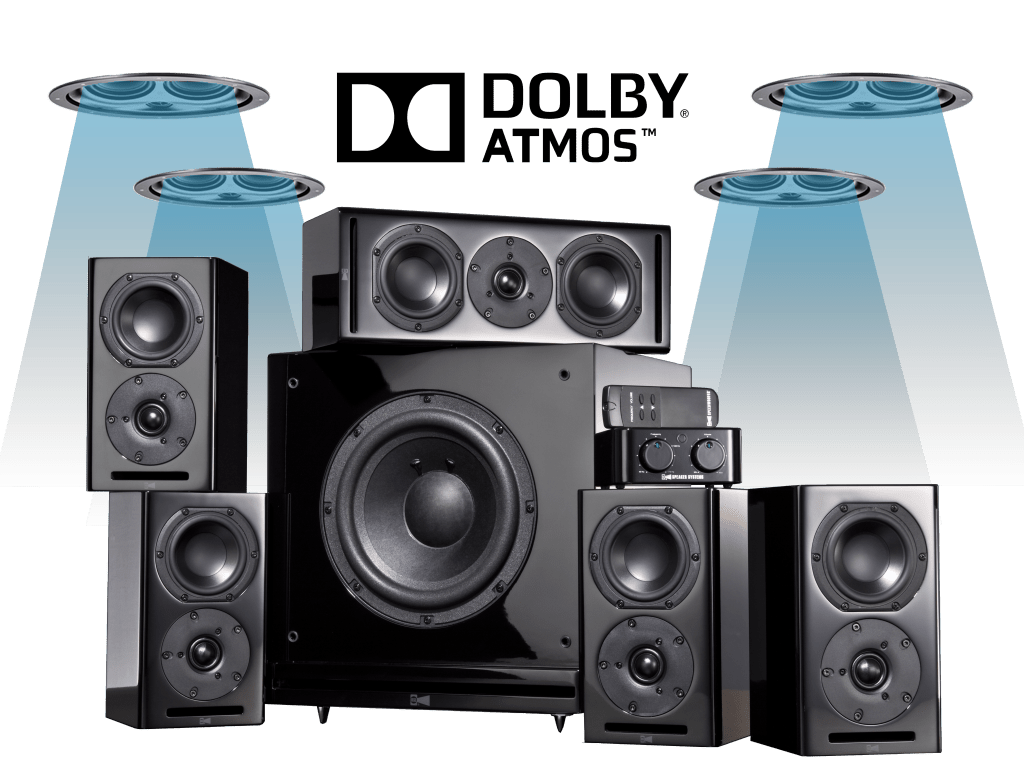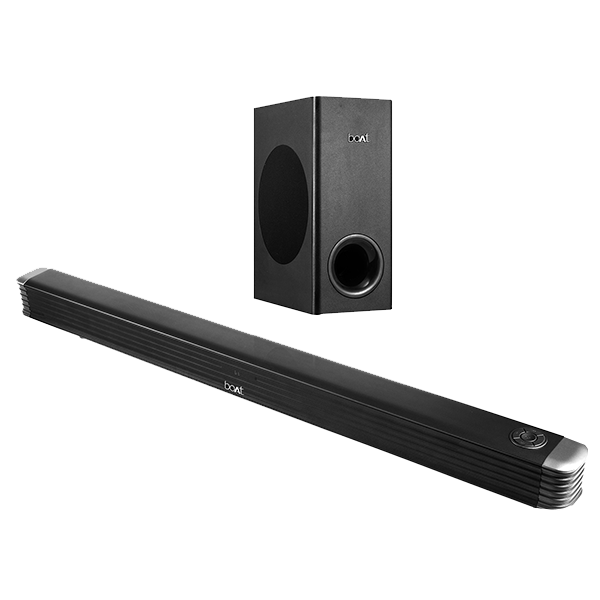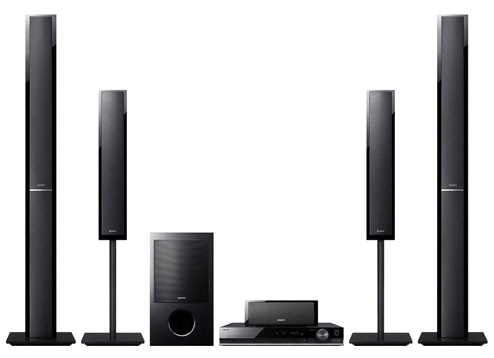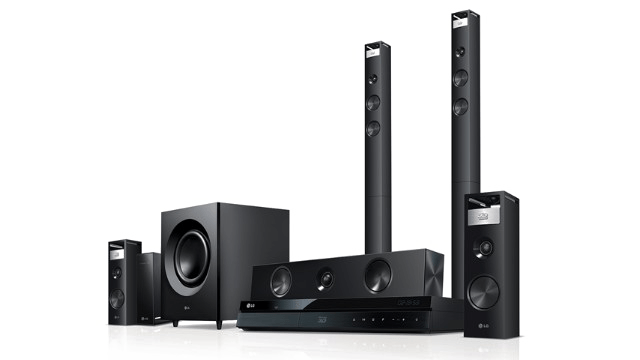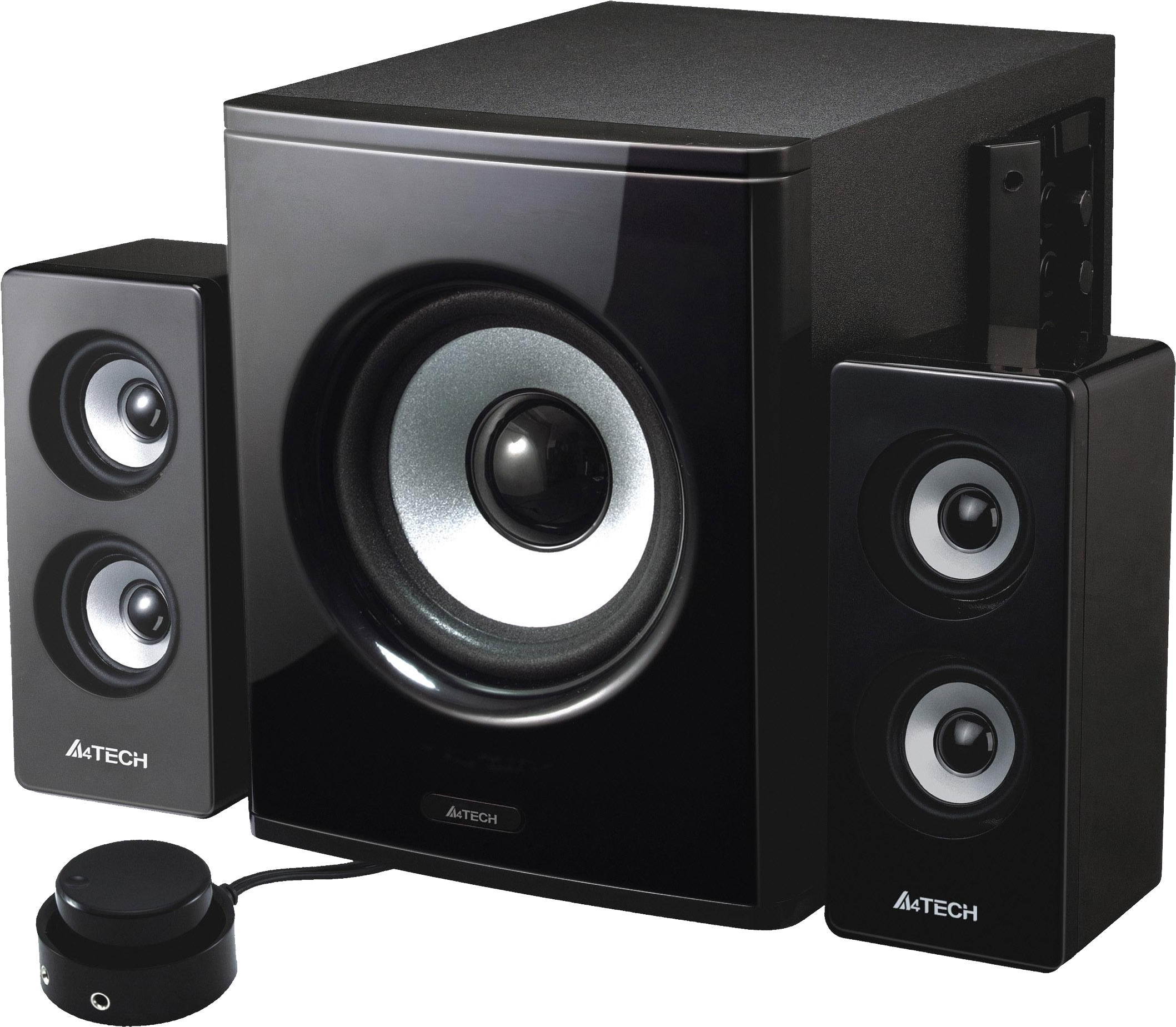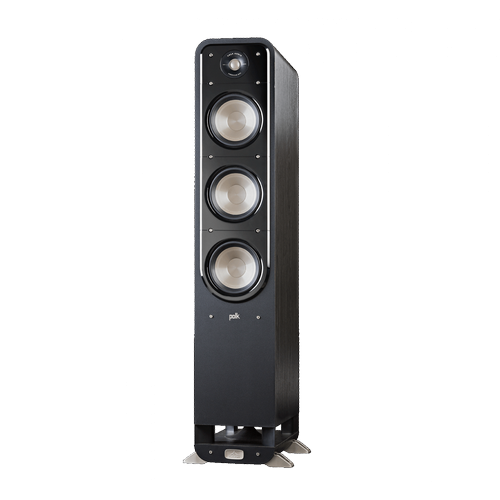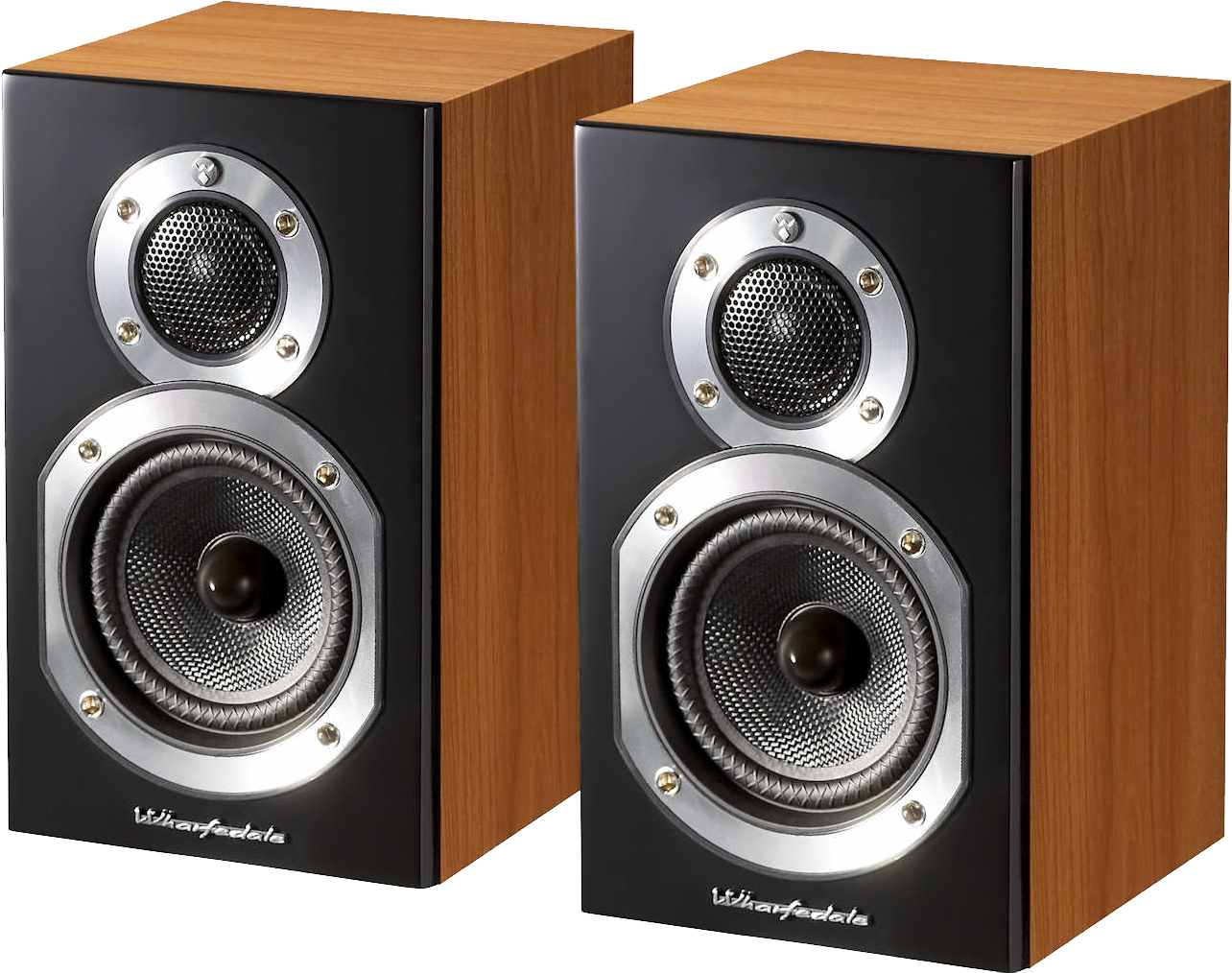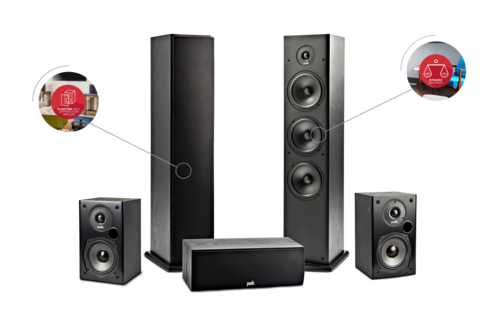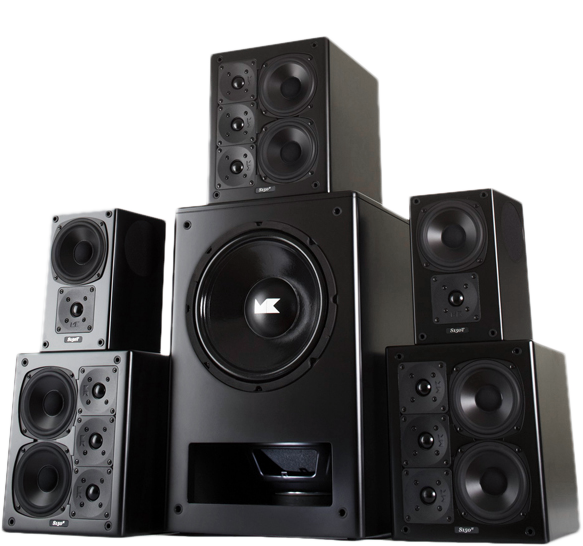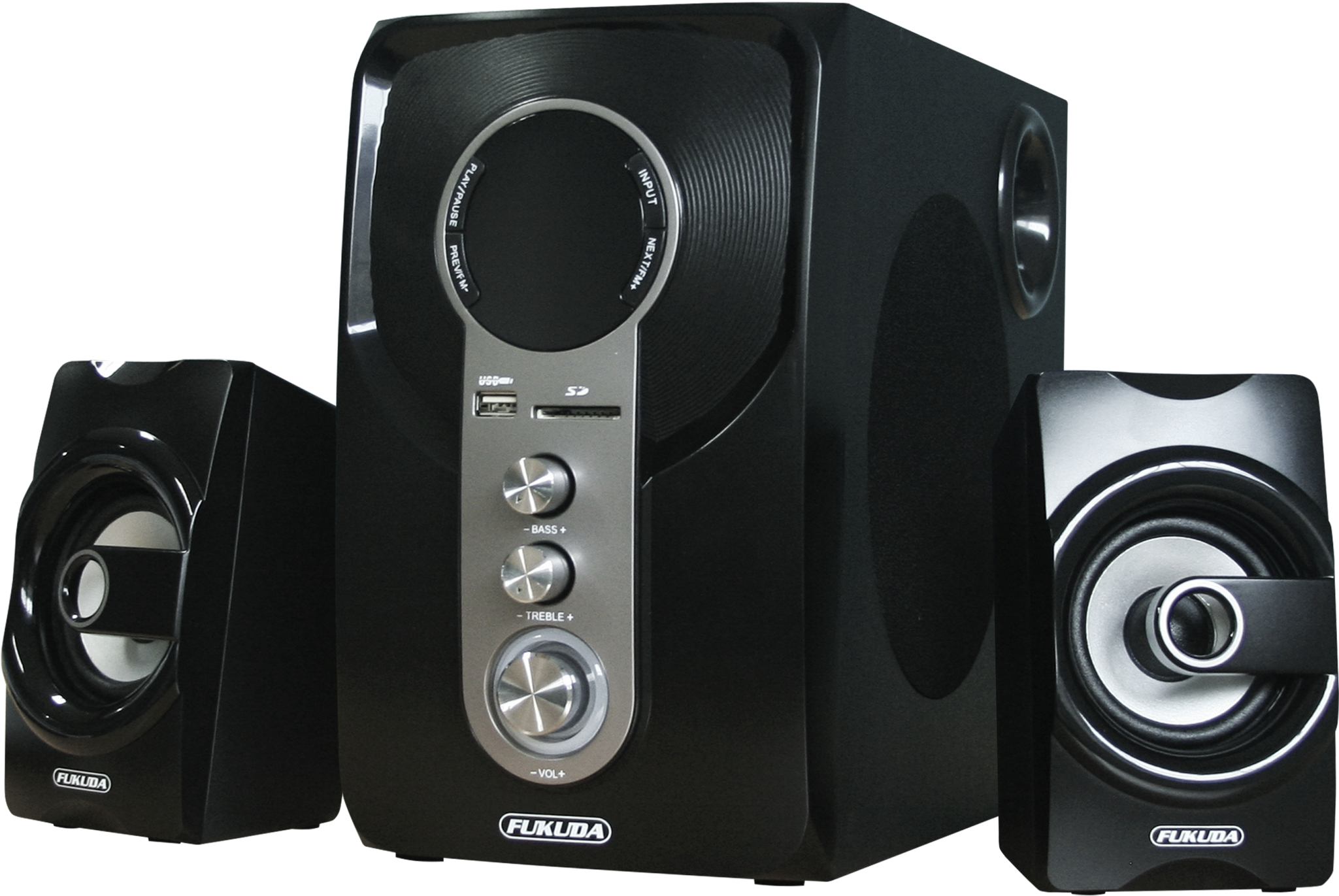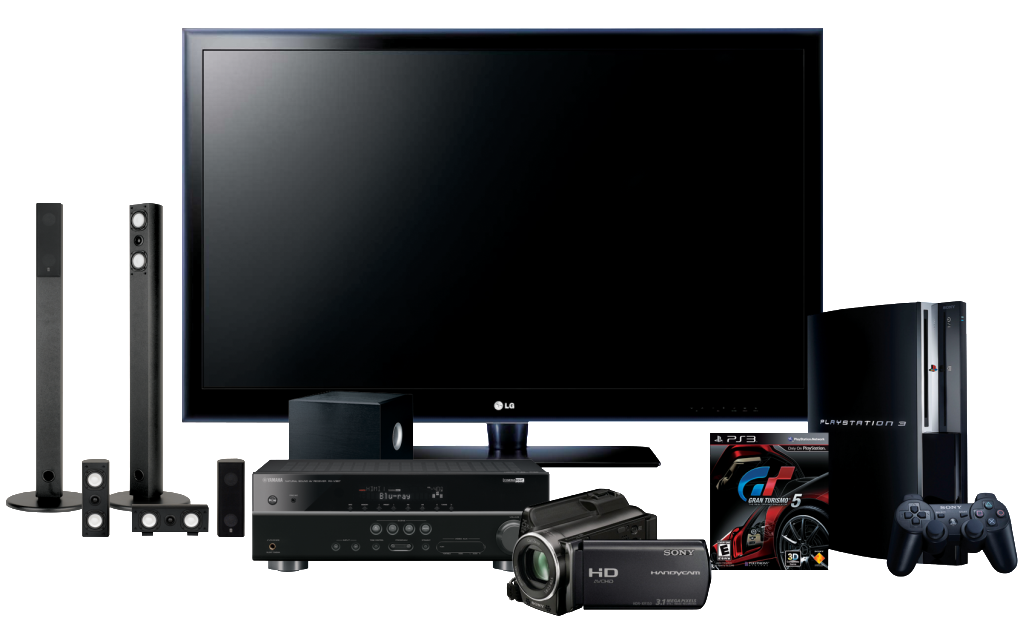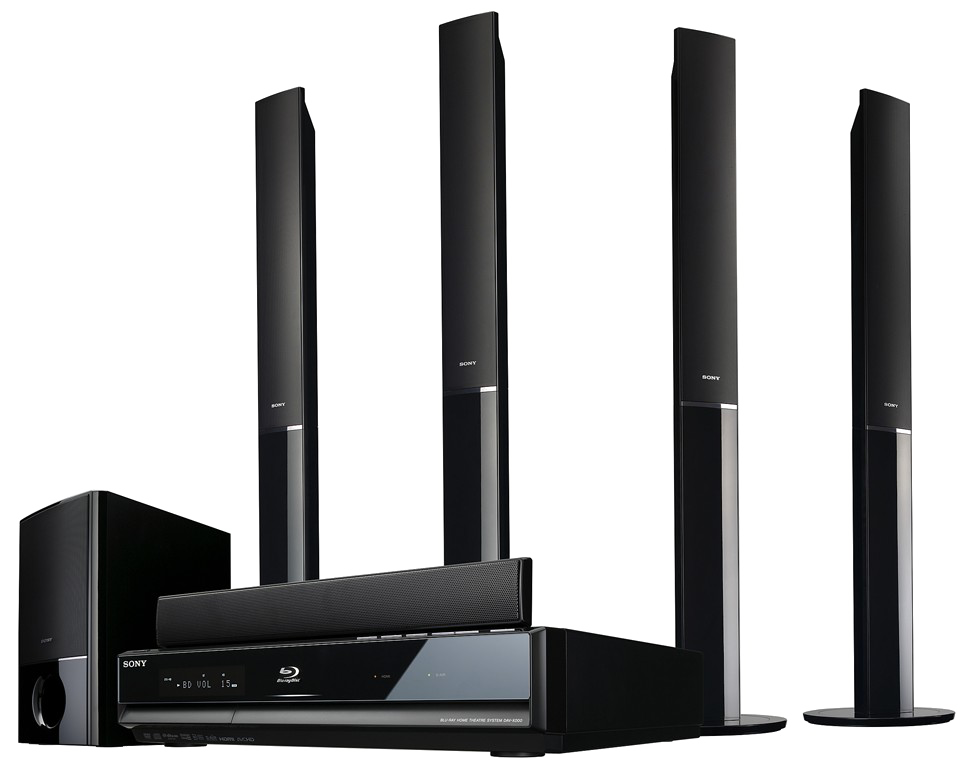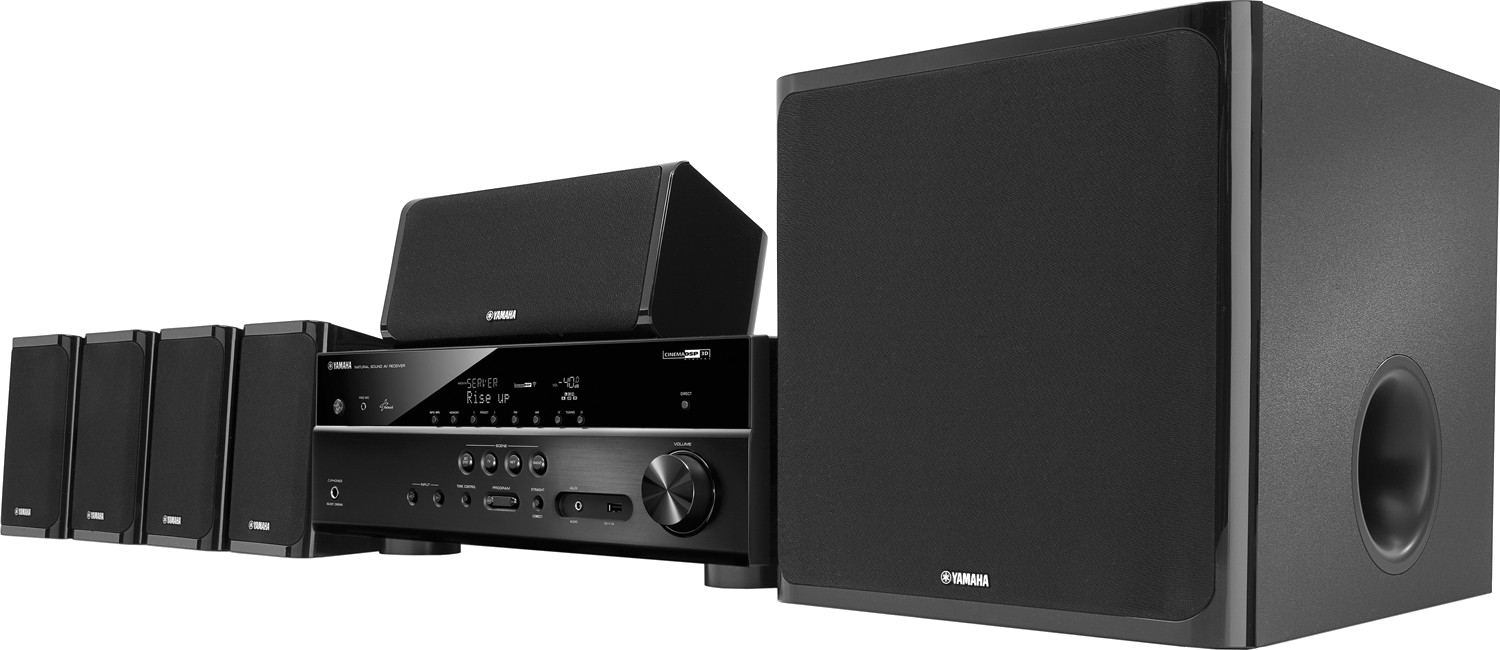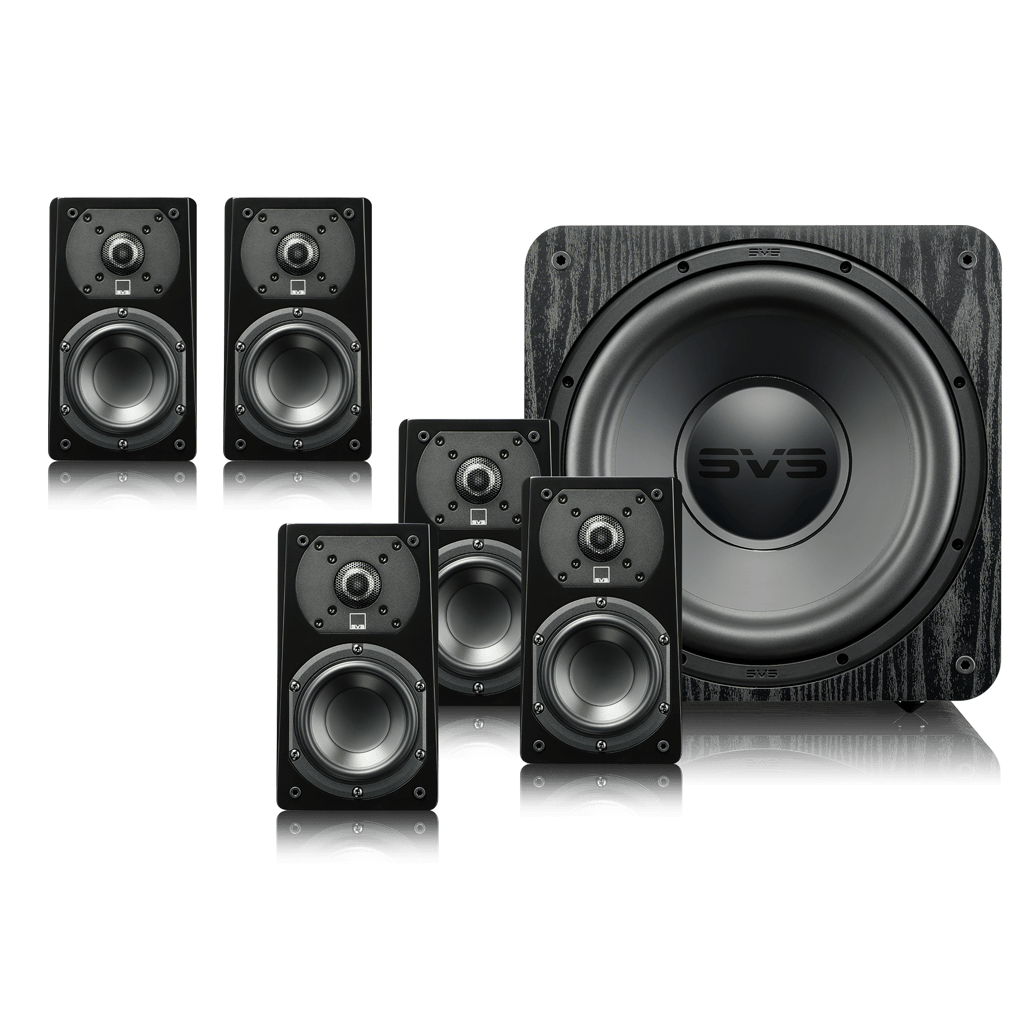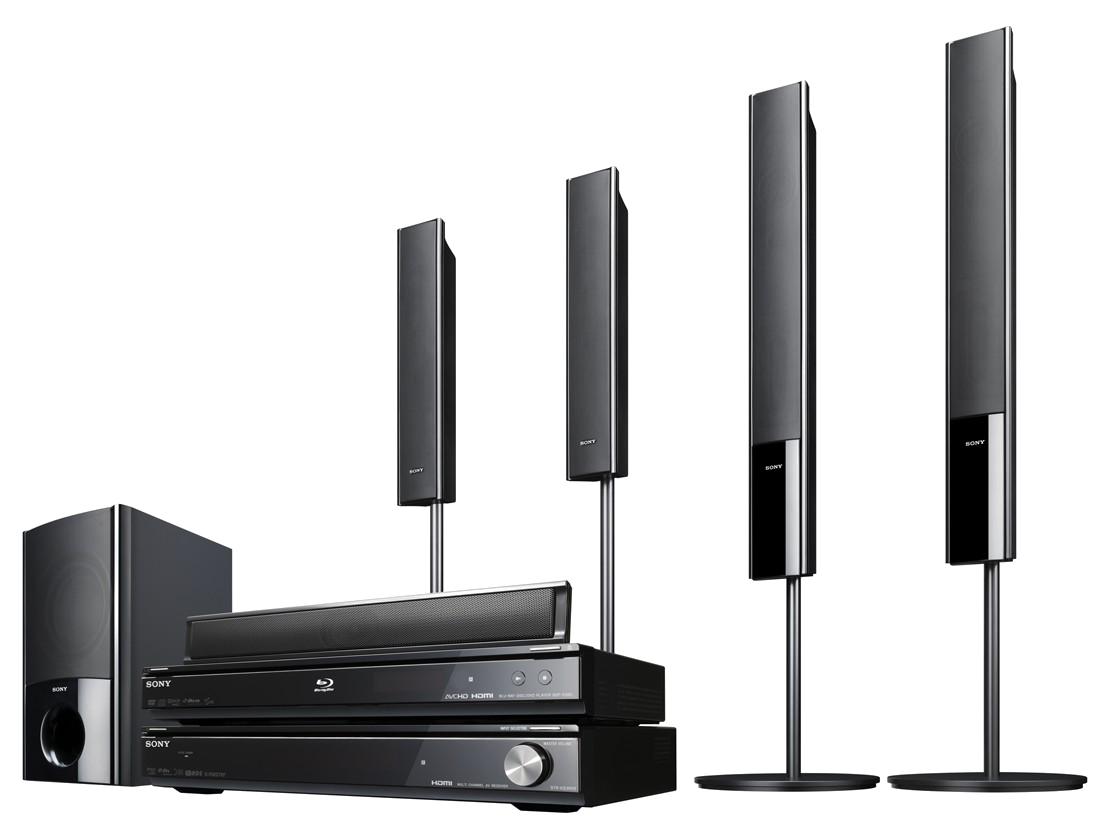Download top and best high-quality free Home Theater System PNG Transparent Images backgrounds available in various sizes. To view the full PNG size resolution click on any of the below image thumbnail.
License Info: Creative Commons 4.0 BY-NC
Home cinema, also known as home theatres or theatre rooms, are house entertainment audio-visual systems that attempt to replicate the feel and ambiance of a movie theatre. It uses consumer electronics-grade video and audio equipment put up in a private home’s room or backyard. Although some studies suggest that films are rated higher and elicit more powerful emotions when seen in a theatre, home cinemas have a significant advantage in terms of convenience. Home theatres in the 1980s generally consisted of a movie pre-recorded on a LaserDisc or VHS tape; a LaserDisc or VHS player; and a large-screen cathode ray tube TV set, but CRT projectors were occasionally used instead.
Technological advancements in sound systems, video player equipment, TV screens, and video projectors in the 2000s changed the equipment used in home cinema setups Nowadays it allows users to enjoy a higher-resolution screen image, improved sound quality, and components that provide users with more options (e.g., many of the more expensive Blu-ray players in 2016 can also “stream” movies and TV shows over the Internet using subscription services such as Netflix).
Because of the emergence of Internet-based subscription services, home theatre customers in the 2016 period are no longer need to commute to a video rental business, as was the case in the 1980s and 1990s (nevertheless, some movie enthusiasts buy DVD or Blu-ray discs of their favourite content)
A home cinema system in the 2020s typically includes a large projected image from a video projector or a large flat-screen high-resolution HDTV system. It is a movie or other video content on a DVD or high-resolution Blu-ray disc, which is played on a DVD player or Blu-ray player, and audio augmented with a multi-channel power amplifier and anywhere from two speakers and a stereo power amplifier (for stereo) (with a surround sound system). Whether using a stereo system or a 5.1 channel surround system, home cinema fans generally employ at least one low-frequency subwoofer speaker cabinet to augment low-frequency effects from movie soundtracks and recreate deep pitches from musical soundtracks.
In the 1920s, 16mm projectors were used to create the first home theatres. In the 1930s, technological advancements led to the production of 8mm and sound 16mm films. As Kodak 8 mm film projector equipment became more accessible in the 1950s, playing home movies became popular among middle and upper-class families in the United States. In the 1980s, the introduction of multi-channel audio systems and subsequently LaserDisc introduced a new paradigm for home video, allowing movie buffs to improve their sound and visual quality. A typical home theatre in the United States from the mid-1980s to the mid-1990s included a LaserDisc or VHS player playing a movie, with the signal routed to a big rear-projection television set and the audio output through a stereo system.
In a darkened viewing area, several people utilised costly front projectors. During the 1980s, viewing VHS movies at home became a popular pastime. Home-theater technology advanced with the development of the DVD-Video format (higher resolution than VHS), Dolby Digital 5.1-channel audio (“surround sound”) speaker systems, and high-definition television (HDTV). It initially included bulky, heavy Cathode Ray Tube HDTVs and flat screen TVs, beginning in the late 1990s and continuing through much of the 2000s.
Large HDTV flatscreen TVs, high-resolution video projectors (e.g., DLP), 3D television technology, and the high-resolution Blu-ray Disc (1080p) ushered in a new age of home theatre 2010s.
In the 2010s, the phrase “home cinema” referred to various methods for watching movies at home. A DVD player, a standard definition (SD) large-screen television with at least a 27-inch (69-cm) diagonal screen size, and an affordable “home theatre in a box” surround sound amplifier/speaker system with a subwoofer might be the most simple and cost-effective setup. A Blu-ray disc player, home theatre PC (HTPC) computer, or digital media receiver streaming devices with a 10-foot user interface, a high-definition video projector and projection screen with over 100-inch (8.3 ft; 2.5 m) diagonal screen size (or a large flatscreen HDTV), and a several-hundred-watt home theatre receiver with five to eleven surround-sound speakers (or a large flatscreen HDTV) could be included in a more expensive home cinema 3D TV sets/projectors. Blu-ray 3D players are used in 3D-TV-enabled home theatres, where viewers wear 3D glasses to see 3D material.
Download Home Theater System PNG images transparent gallery.
- Home Theater System Background PNG
Resolution: 845 × 583
Size: 192 KB
Image Format: .png
Download
- Home Theater System PNG Background
Resolution: 469 × 291
Size: 81 KB
Image Format: .png
Download
- Home Theater System PNG
Resolution: 754 × 700
Size: 455 KB
Image Format: .png
Download
- Home Theater System PNG Pic
Resolution: 600 × 600
Size: 106 KB
Image Format: .png
Download
- Home Theater System PNG File
Resolution: 1024 × 776
Size: 228 KB
Image Format: .png
Download
- Home Theater System PNG Image
Resolution: 600 × 600
Size: 80 KB
Image Format: .png
Download
- Home Theater System PNG Photo
Resolution: 494 × 358
Size: 35 KB
Image Format: .png
Download
- Home Theater System PNG Cutout
Resolution: 640 × 360
Size: 37 KB
Image Format: .png
Download
- Home Theater System PNG Images
Resolution: 2117 × 1849
Size: 2740 KB
Image Format: .png
Download
- Home Theater System PNG Photos
Resolution: 500 × 500
Size: 106 KB
Image Format: .png
Download
- Home Theater System Transparent
Resolution: 1284 × 1014
Size: 994 KB
Image Format: .png
Download
- Home Theater System PNG Clipart
Resolution: 500 × 332
Size: 86 KB
Image Format: .png
Download
- Home Theater System PNG HD Image
Resolution: 583 × 546
Size: 280 KB
Image Format: .png
Download
- Home Theater System Vector PNG
Resolution: 512 × 512
Size: 83 KB
Image Format: .png
Download
- Home Theater System
Resolution: 2049 × 1371
Size: 3812 KB
Image Format: .png
Download
- Home Theater System PNG Picture
Resolution: 1023 × 635
Size: 327 KB
Image Format: .png
Download
- Home Theater System PNG Image HD
Resolution: 963 × 763
Size: 208 KB
Image Format: .png
Download
- Home Theater System No Background
Resolution: 1500 × 650
Size: 670 KB
Image Format: .png
Download
- Home Theater System PNG Free Image
Resolution: 1024 × 1024
Size: 262 KB
Image Format: .png
Download
- Home Theater System PNG Image File
Resolution: 1107 × 829
Size: 230 KB
Image Format: .png
Download
